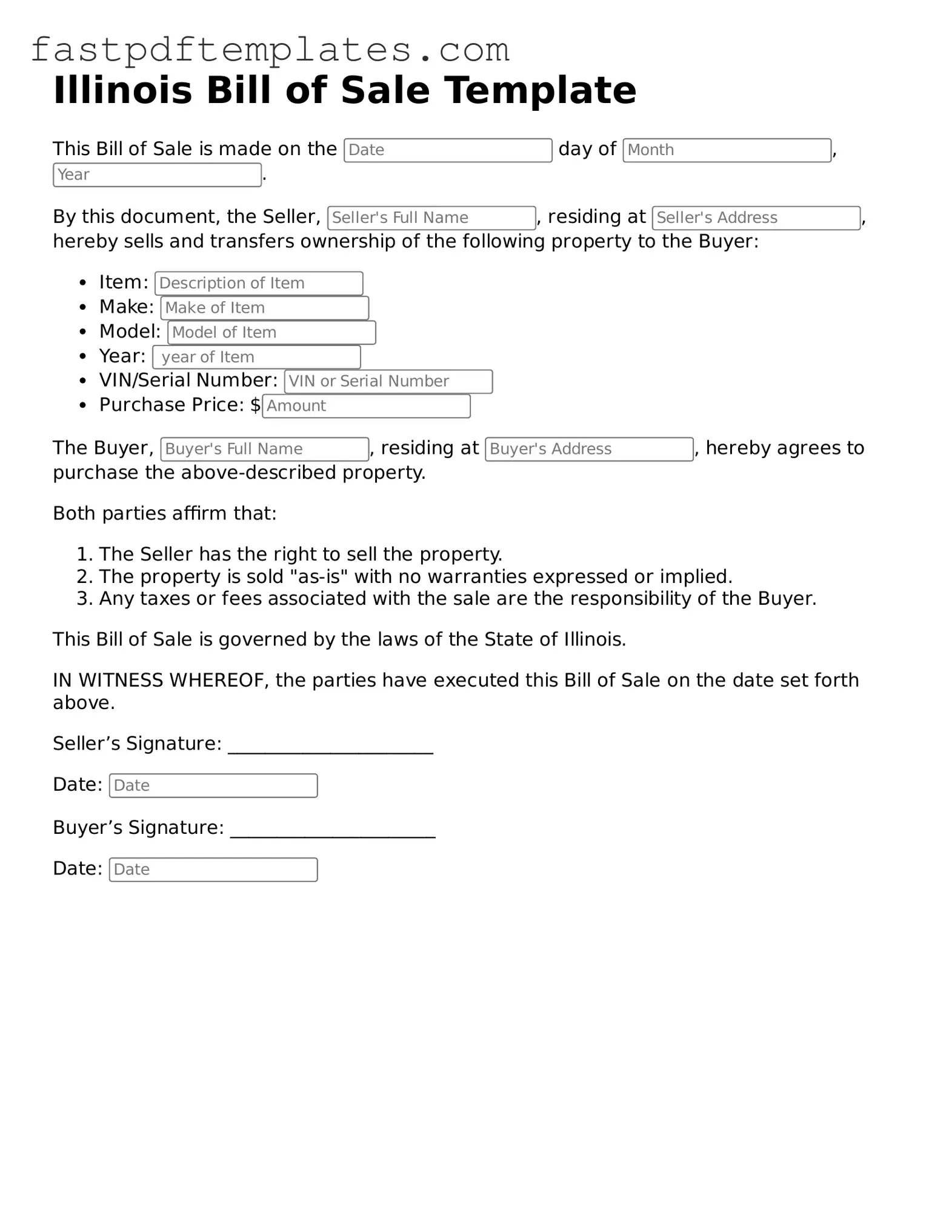Attorney-Approved Illinois Bill of Sale Document
The Illinois Bill of Sale form serves as a legal document that records the transfer of ownership of personal property from one party to another. This form not only provides a written record of the transaction but also helps protect both the buyer and seller by outlining the details of the sale. Understanding its components can simplify the process of buying or selling items in Illinois.
Access Document
